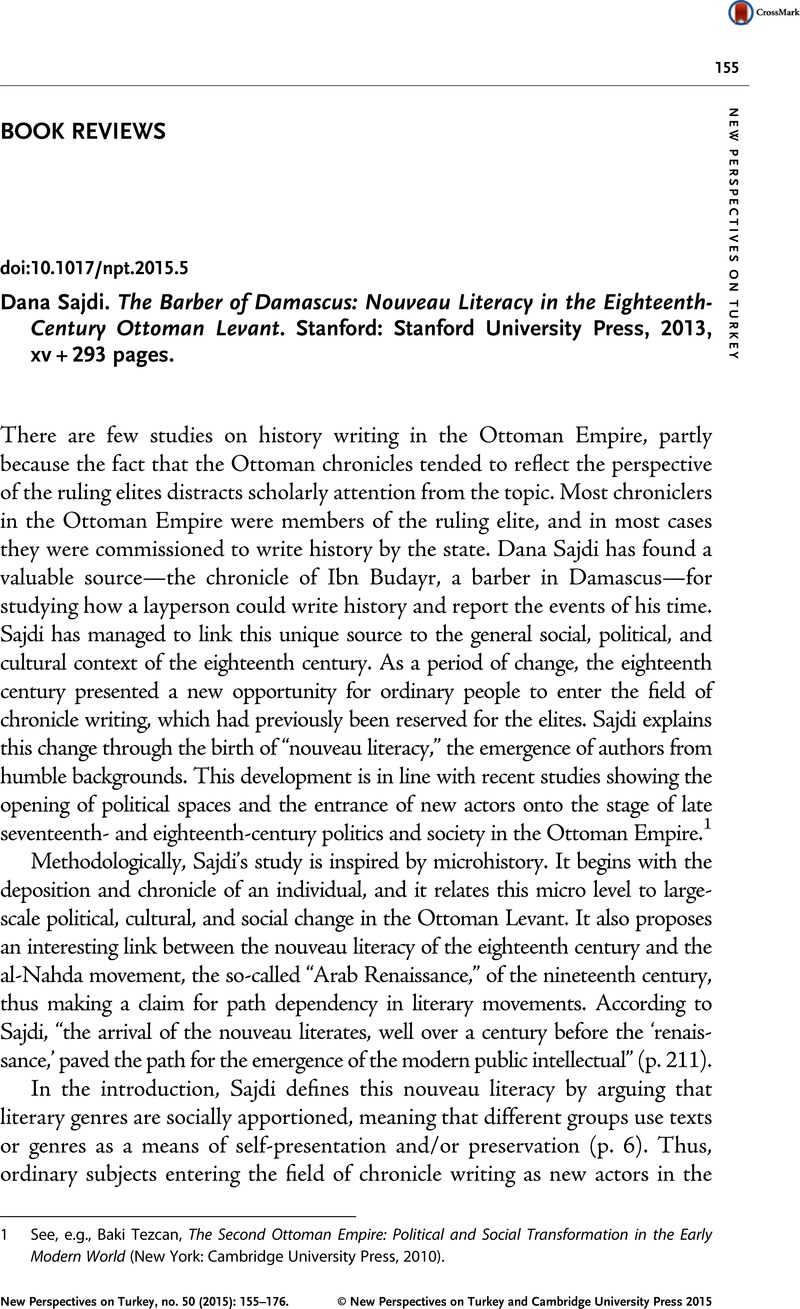No CrossRef data available.
Article contents
Dana Sajdi. The Barber of Damascus: Nouveau Literacy in the Eighteenth-Century Ottoman Levant. Stanford: Stanford University Press, 2013, xv+293 pages.
Review products
Published online by Cambridge University Press: 11 June 2015
Abstract

- Type
- Book Reviews
- Information
- Copyright
- © New Perspectives on Turkey and Cambridge University Press 2015
References
1 See, e.g., Tezcan, Baki, The Second Ottoman Empire: Political and Social Transformation in the Early Modern World (New York: Cambridge University Press, 2010)Google Scholar.
2 Ginzburg, Carlo, The Cheese and the Worms: The Cosmos of a Sixteenth-Century Miller, trans. John and Anne Tedeschi (Baltimore: Johns Hopkins University Press, 1980)Google Scholar.
3 Especially Cornell Fleischer’s study on Mustafa Âli employs microhistory and provides an example to compare Turkish and Arabic historians from different centuries of the Ottoman state. See Fleischer, Cornell H., Bureaucrat and Intellectual in the Ottoman Empire: The Historian Mustafa Âli (1541–1600) (Princeton: Princeton University Press, 1986)CrossRefGoogle Scholar.


